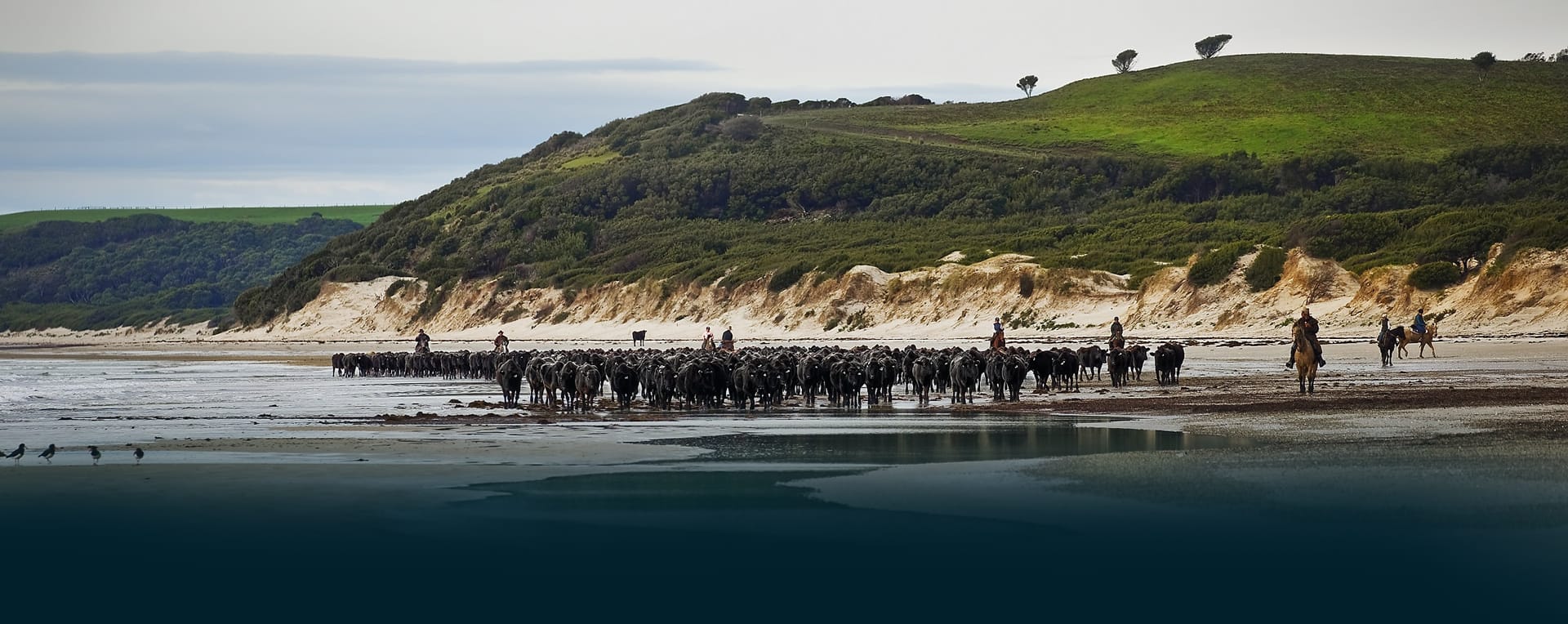THE HAMMOND FAMILY

Beginning with embryos from Canada in 1994, the Hammond Family have built their herd over the last 30 years using embryo production and the use of elite fullblood sires, over their original purebred cows.
Focusing in the early days on Monjiro bloodlines through Michifuku, Haruki 2 and Ichiryuno. Additionally, they had the import rights to Kenhanafuji, World K’s Kanadagene 100, Kanadagene 101, and Genjiro, who they used extensively in artificial insemination work. Other than Kenhanafuji, these bulls were sons of three of the most prominent Fullblood females ever used outside of Japan: Suzutani, Okutani, and Rikitani. This set up the foundation for a herd with powerful marbling and soft fat genetics.The brothers have sourced and produced high-performing Wagyu ever since, focused on marbling, soft-fat, large eye muscle area and high carcase weight animals; through pedigree, genetic testing, performance, and phenotype.
Fast forward to present where they run a commercial herd of 1800 wagyu cows, who live on Robbins Island and winter on Walker Island. The cattle are raised on the pristine grasses of Robbins Island, off the north-west tip of Tasmania, then finished on a long-fed grain program, before being sold through their Robbins Island Wagyu brand to markets around the world. The focus of this program is to produce the highest value carcases; combining not only elite marbling, but also high carcase weights and large ribeye areas. As a result, the Hammond’s average a higher weight than industry standard, while maintaining 9+ marble scores, with those soft fats that enhance the unique taste profile.
They run their commercial herd as a stud herd on a large scale. 90% of their calves are born through artificial insemination or embryo transfer. All calves are tagged at birth and followed right through until the carcases are graded in the chiller. The Hammond’s utilise both the Masterbeef grading camera and the MIJ carcase camera to help analyse their high end performers. Through this process the best females are identified and focused on to produce the next generation of elite females and bulls.
Their spectacular horseback cattle musters are required to shift the cattle between the islands and the Tasmanian mainland. Cattle are walked onto the beach using horses and crossed through numerous channels and rivers to make the journey back to Tasmania. It is a sight to behold, with groups of cattle up to 800 head having a stroll on the beach. Additionally, the north-west of Tasmania is renowned as one of the cleanest places on earth, with the Cape Grim base monitoring station consistently recording the cleanest air in the world. The Robbins Island herd spends their days in this paradise of clean air, water, lush green grass, and even get the chance to get their trace elements from seaweed on the beaches.
The Hammond’s started focusing on polled cattle in 2013 and have fully committed to this journey. Through the use of Bar R 52Y, his sons, and polled sons of Itoshigenami JNR they have been seeing consistent carcase results. The Poll Wagyu collaboration has pushed the genetic gain generations ahead, and the Hammond’s are making use of these genetics in their commercial herd. Currently they have 1200 polled breeders.
The Hammonds are well known in the wagyu community. Keith was one of the early Presidents of the Australian Wagyu Association, and John has served as Vice-President. They have won and been placed in many national meat competitions. They pride themselves on attention to detail and doing everything they can to give their cattle the best chance to express their genetic potential. A passion for the genetics and welfare of the cattle have seen them grow to the commercial stud they have in place today.

